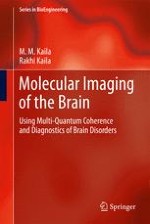2013 | OriginalPaper | Chapter
11. Practical Illustrations Sodium Spectroscopy and Imaging: Clinical Applications
Authors : M. M. Kaila, Rakhi Kaila
Published in: Molecular Imaging of the Brain
Publisher: Springer Berlin Heidelberg
Activate our intelligent search to find suitable subject content or patents.
Select sections of text to find matching patents with Artificial Intelligence. powered by
Select sections of text to find additional relevant content using AI-assisted search. powered by
